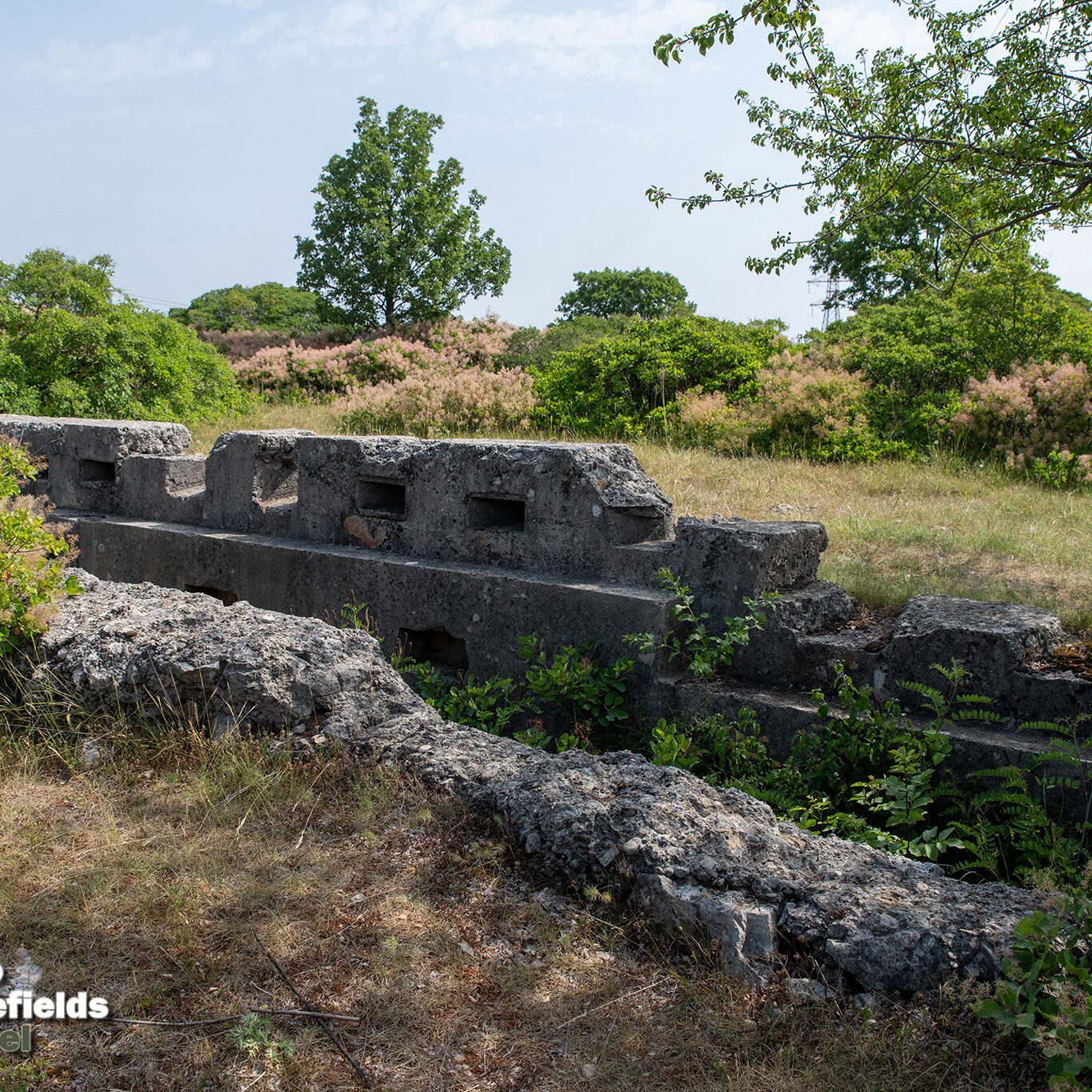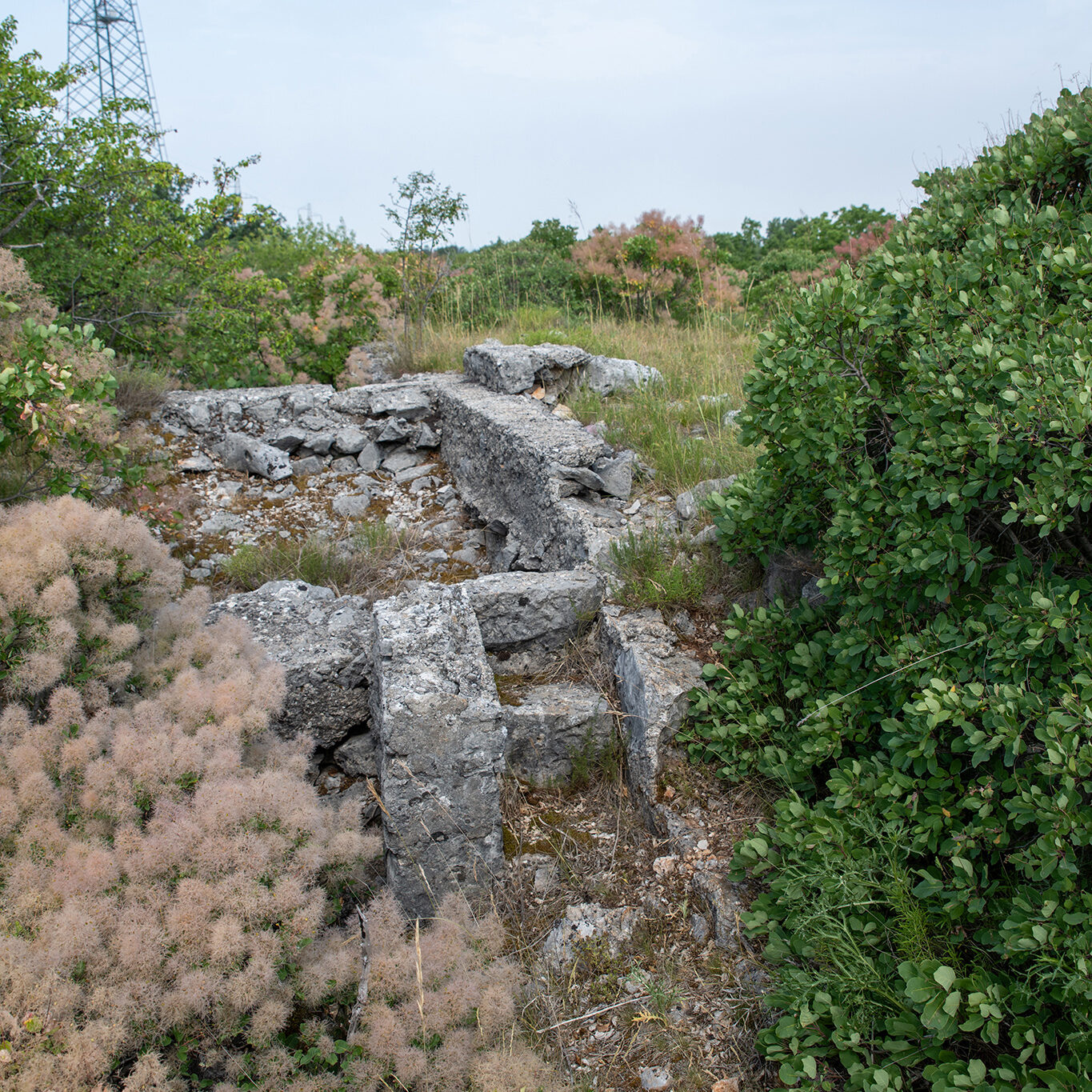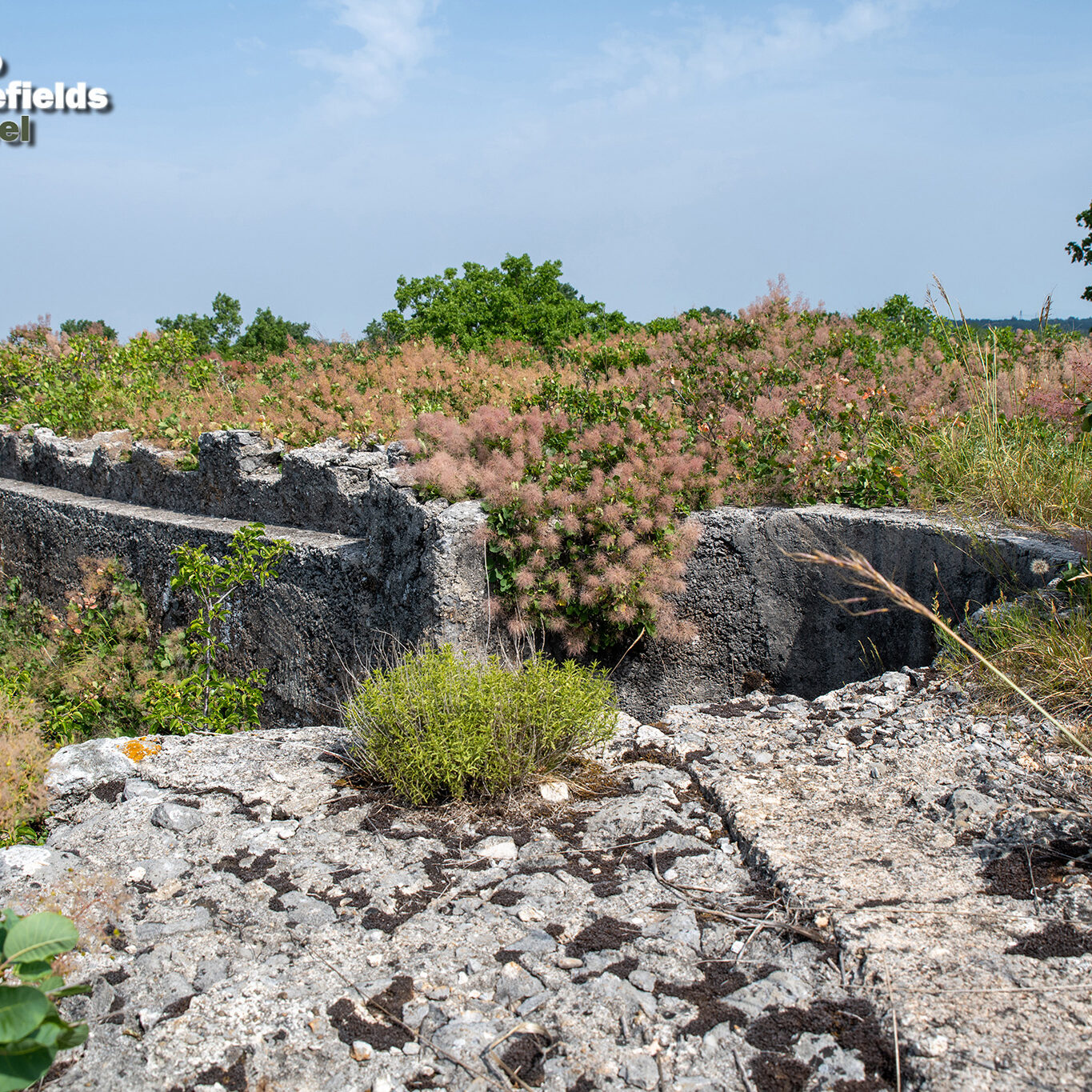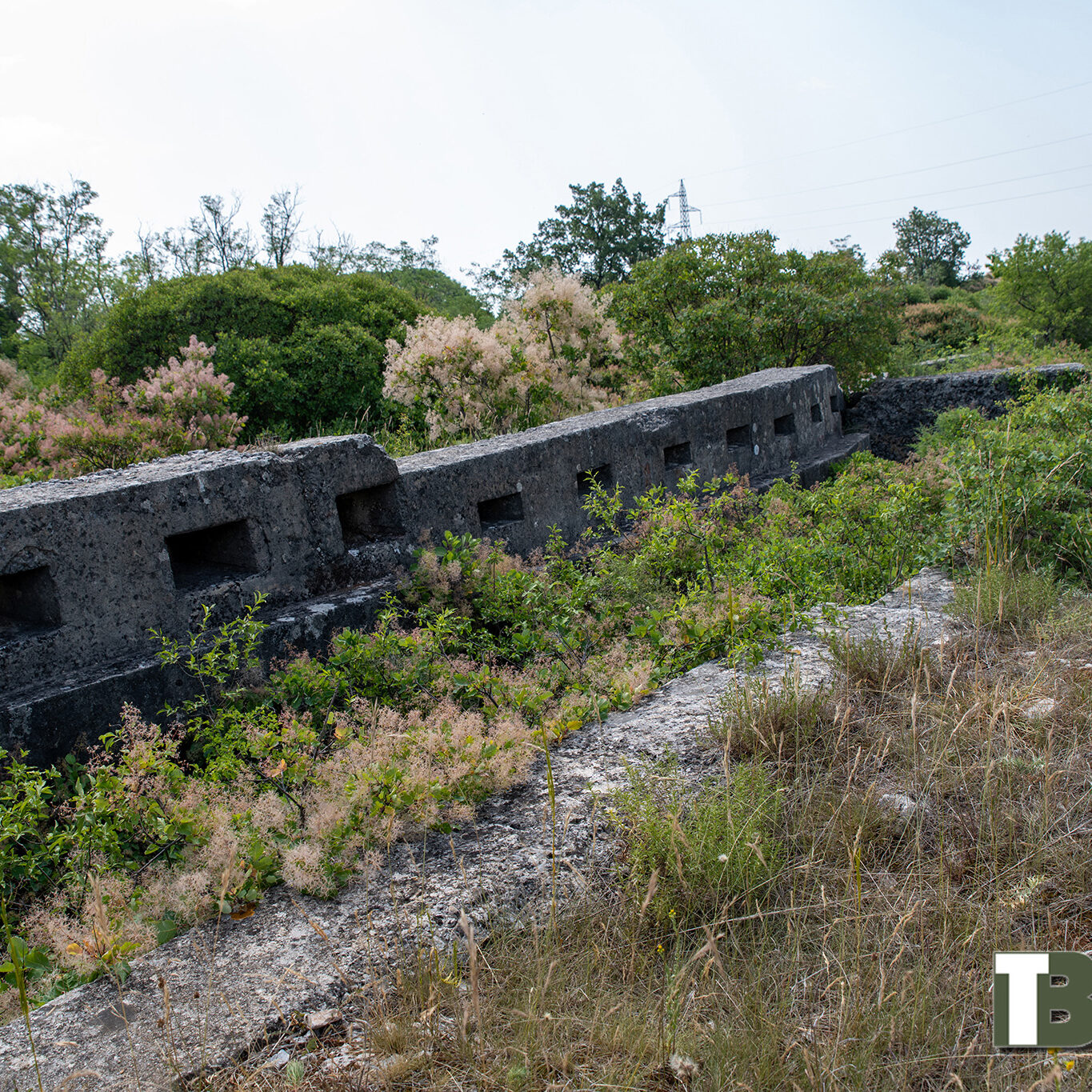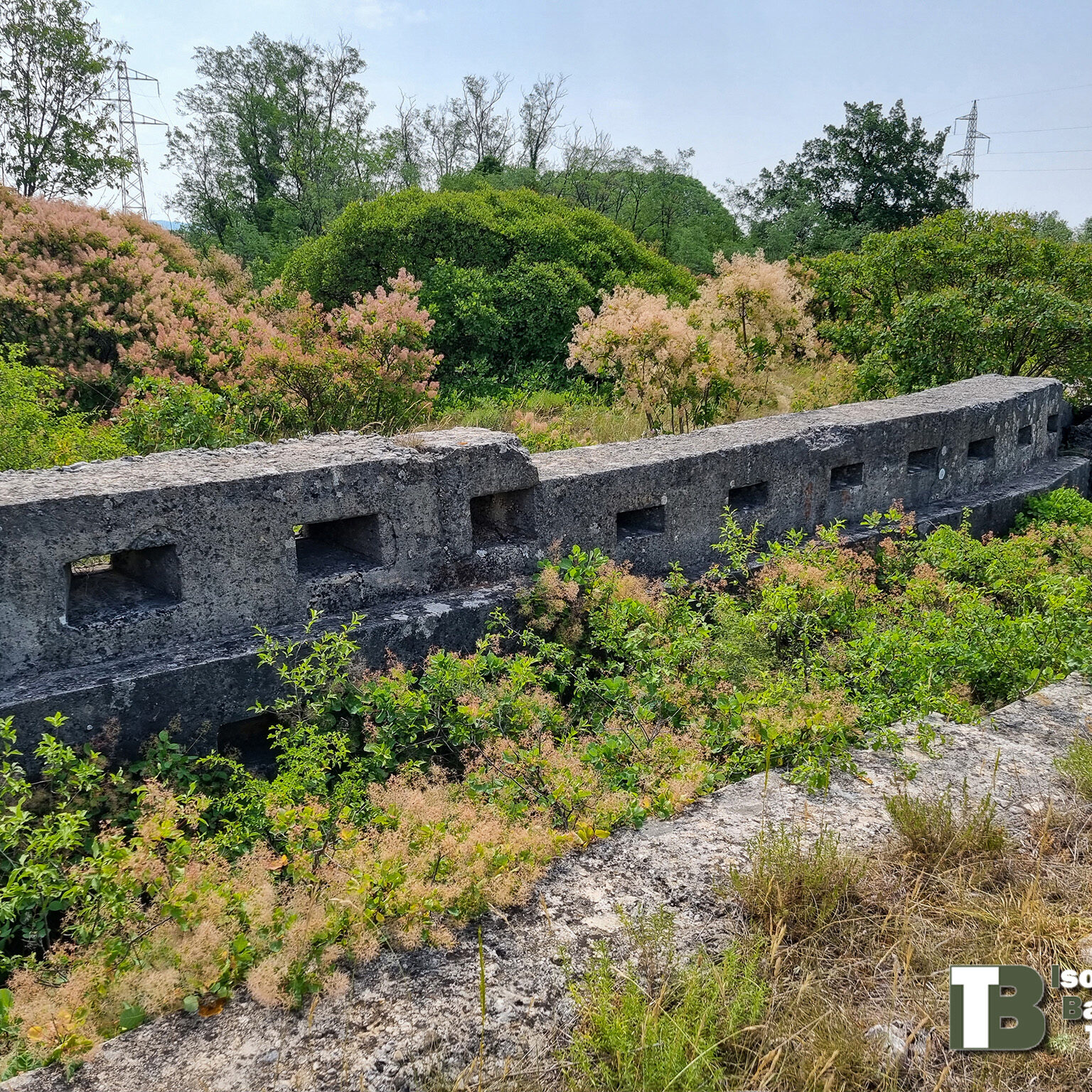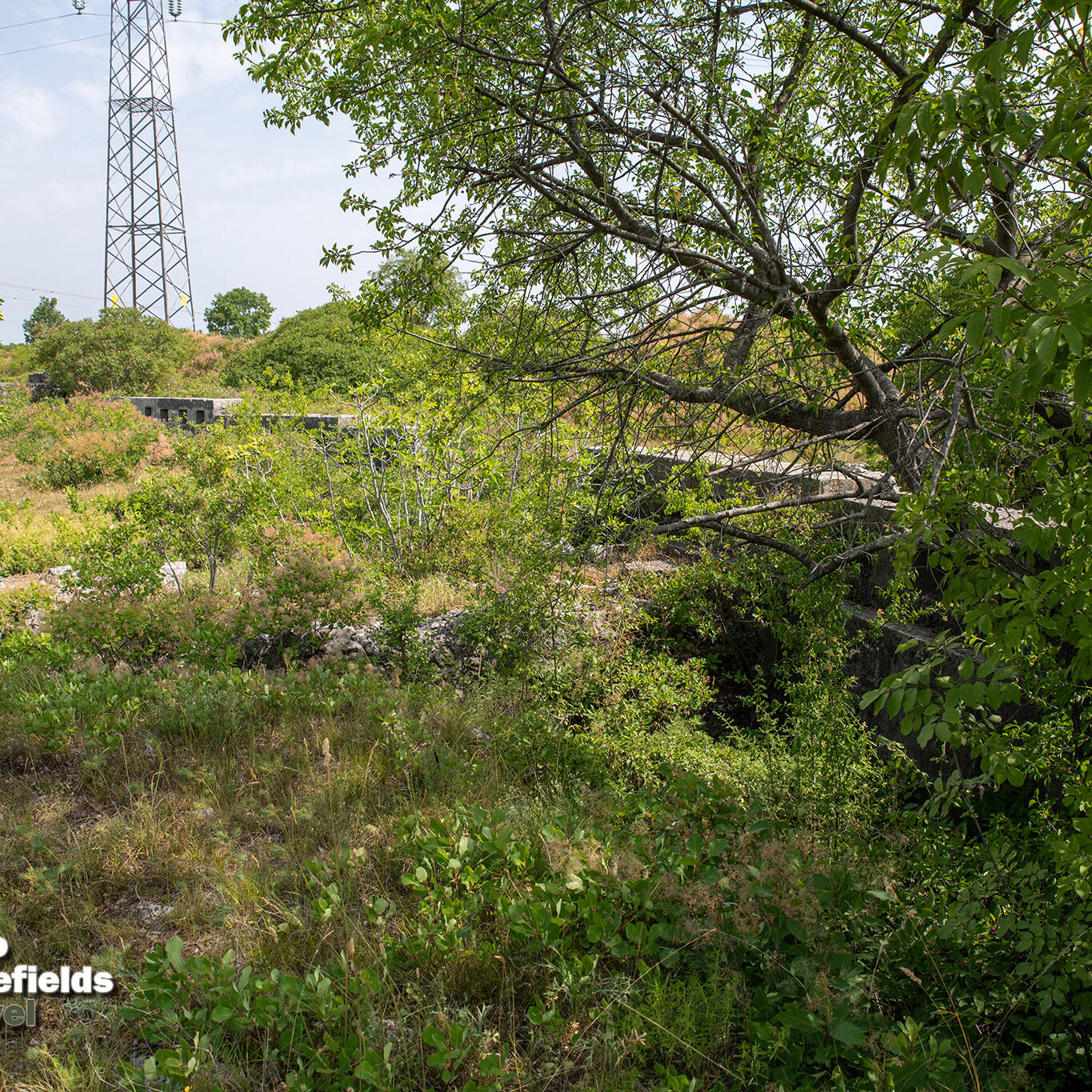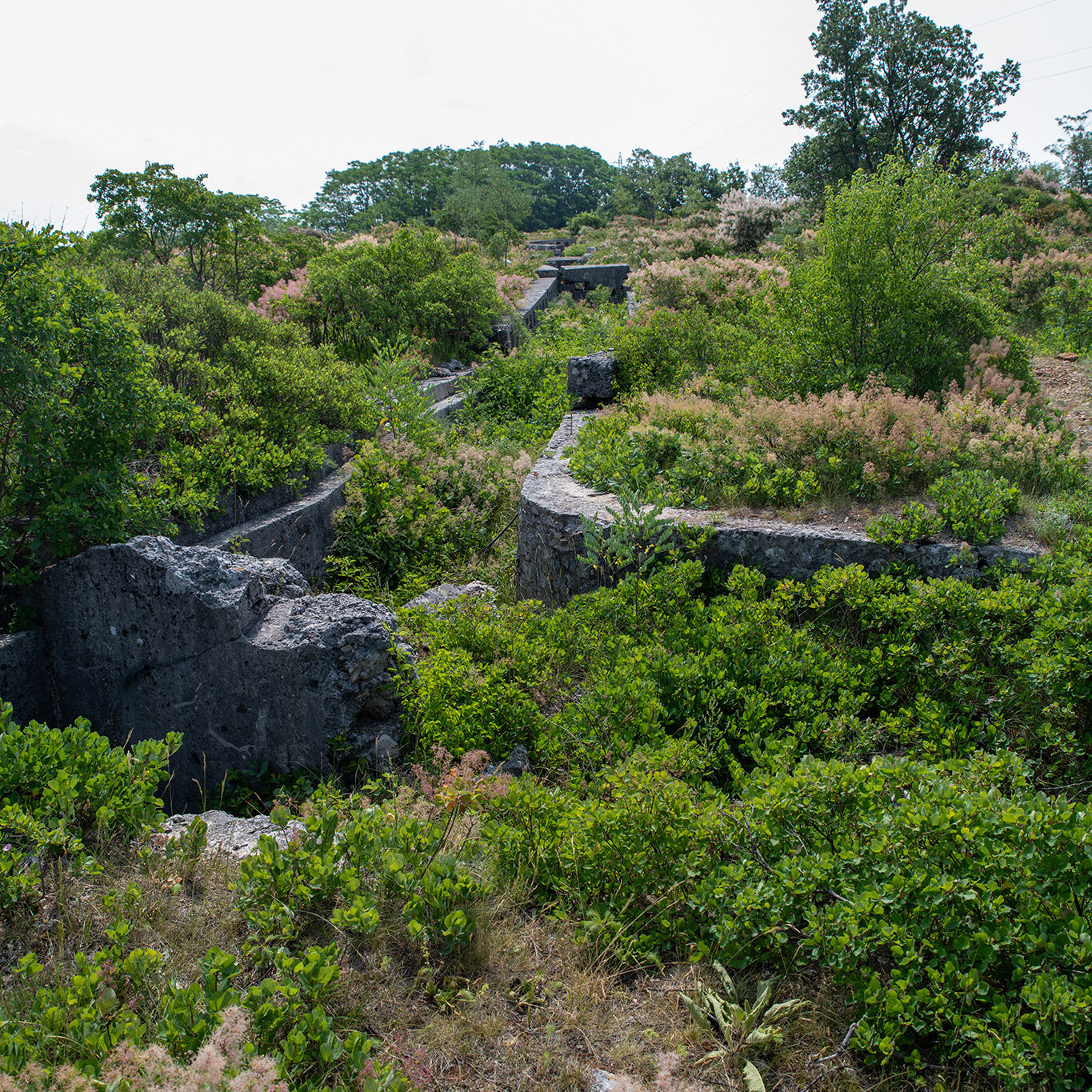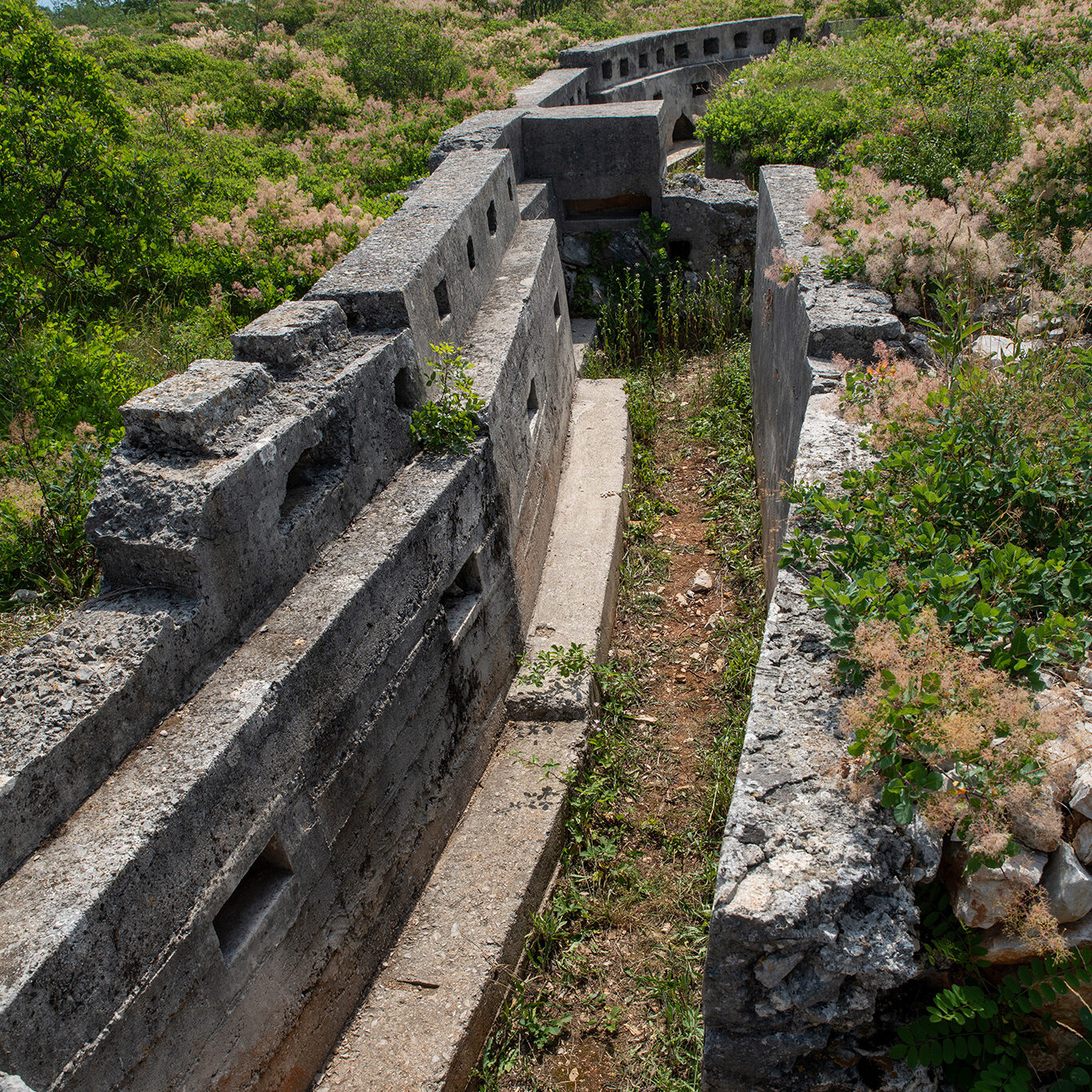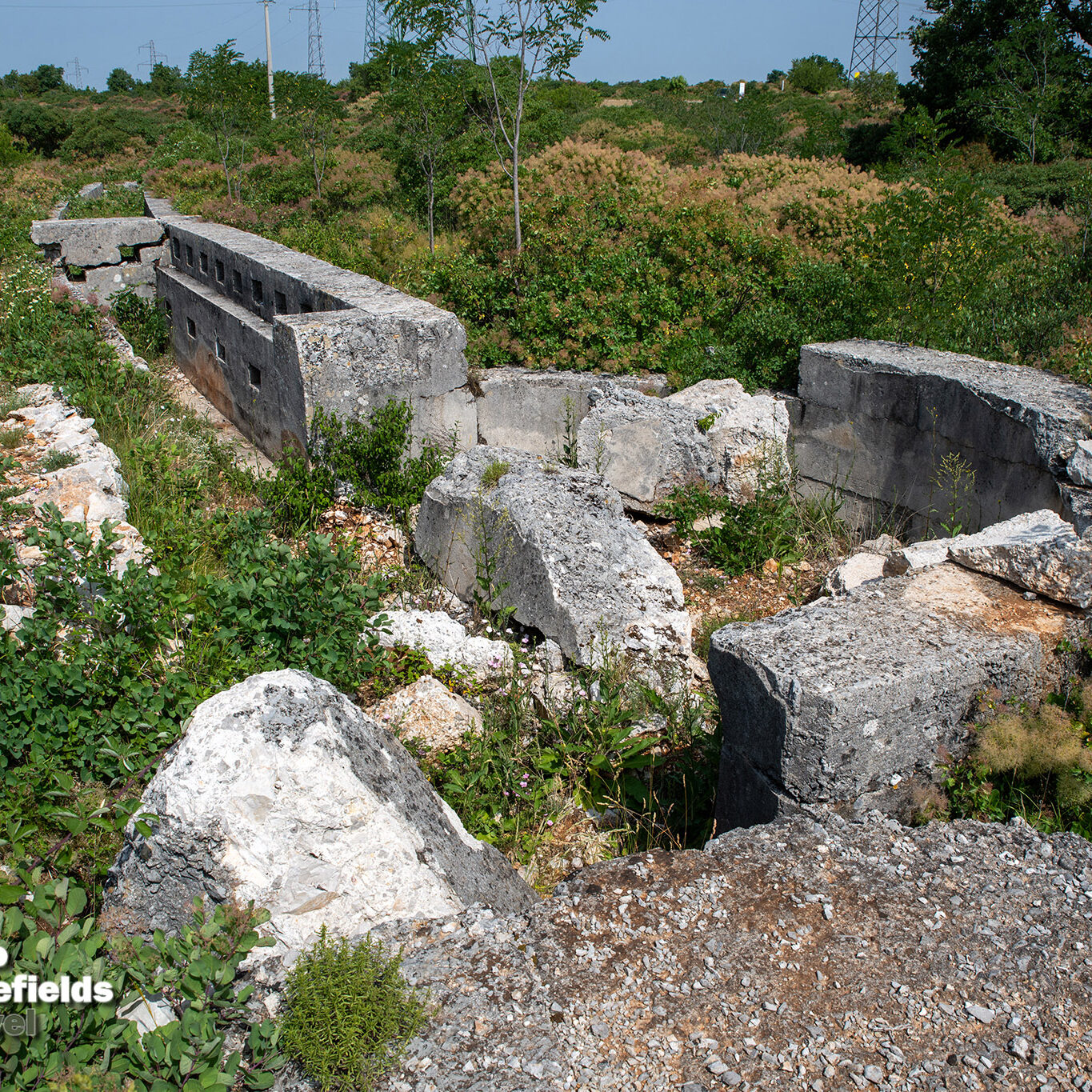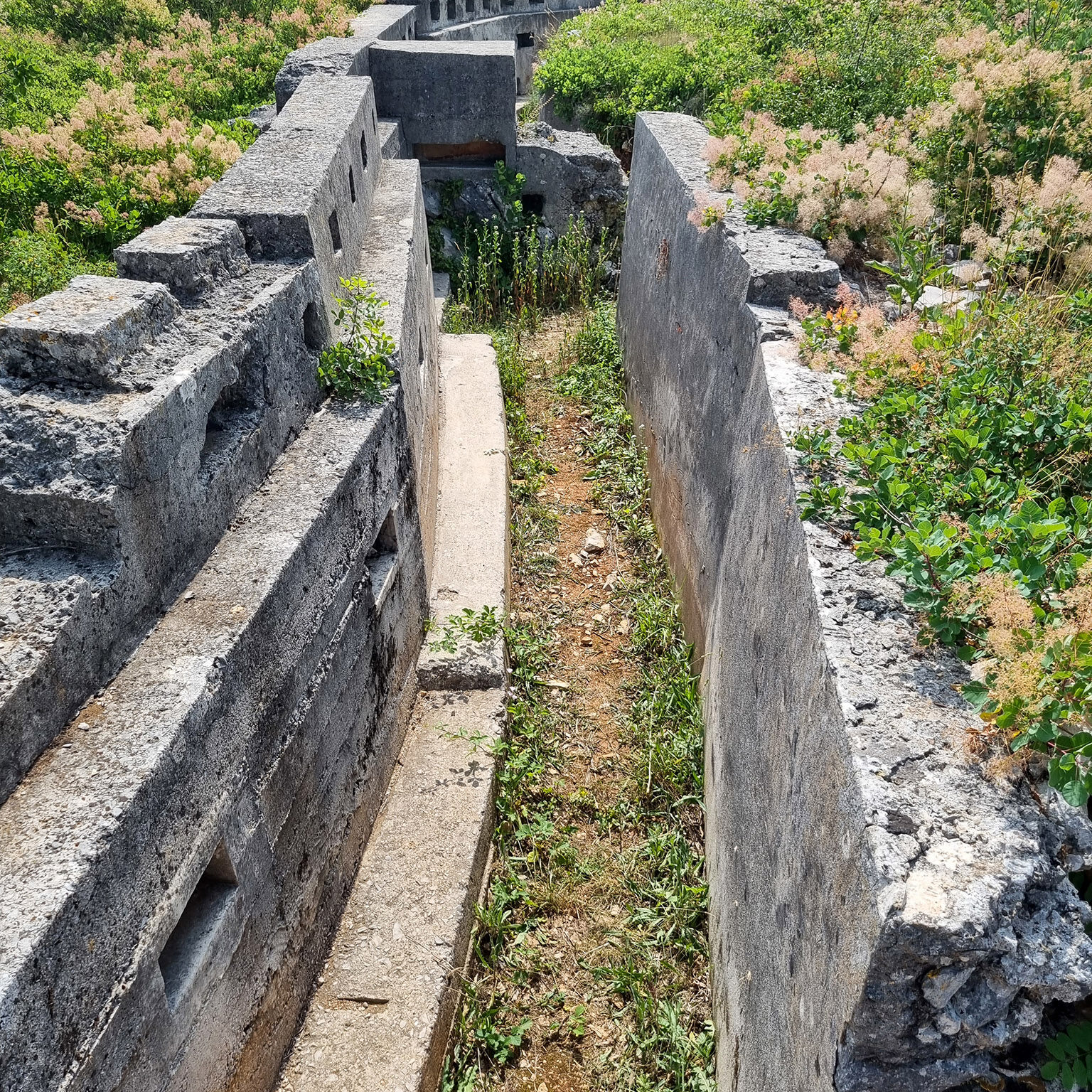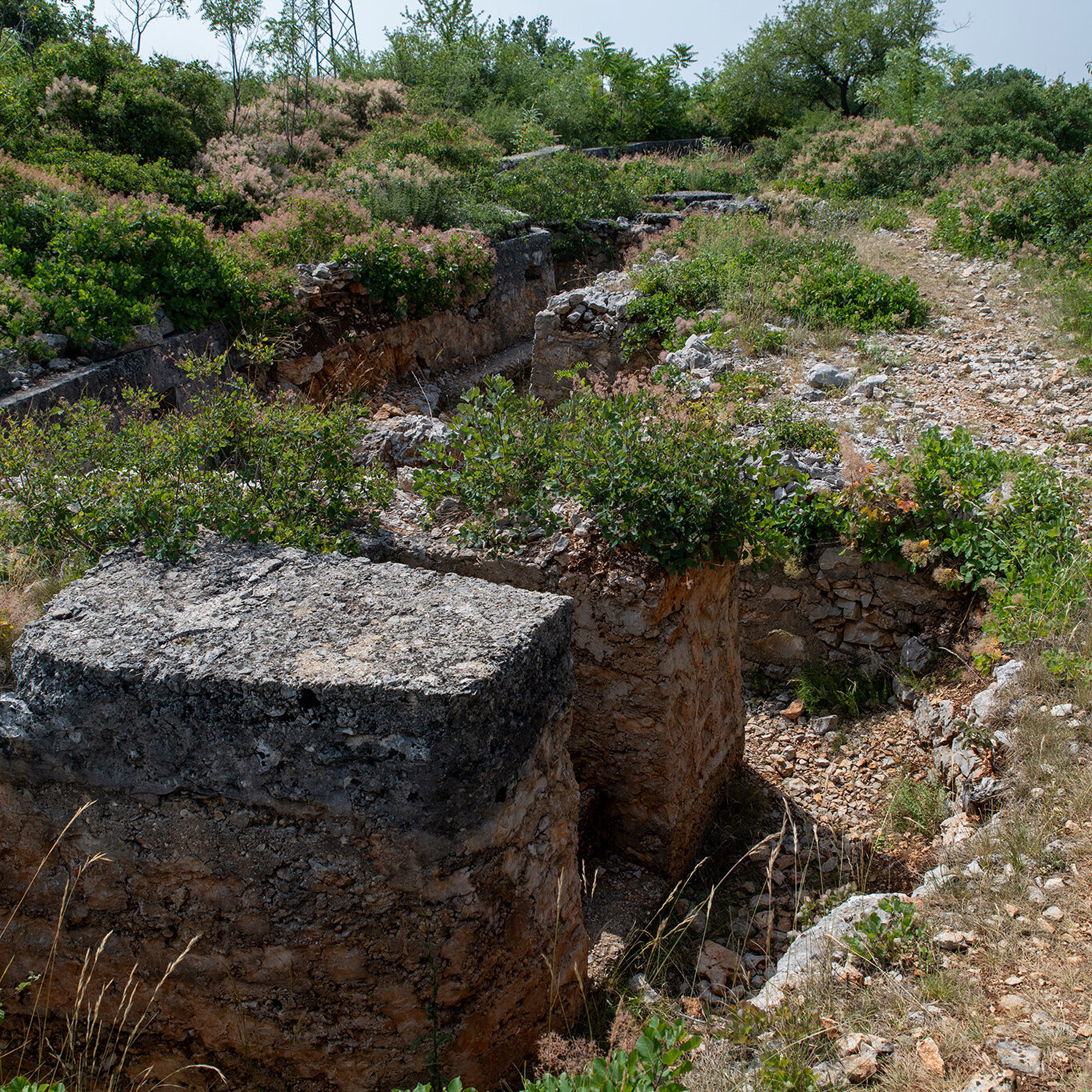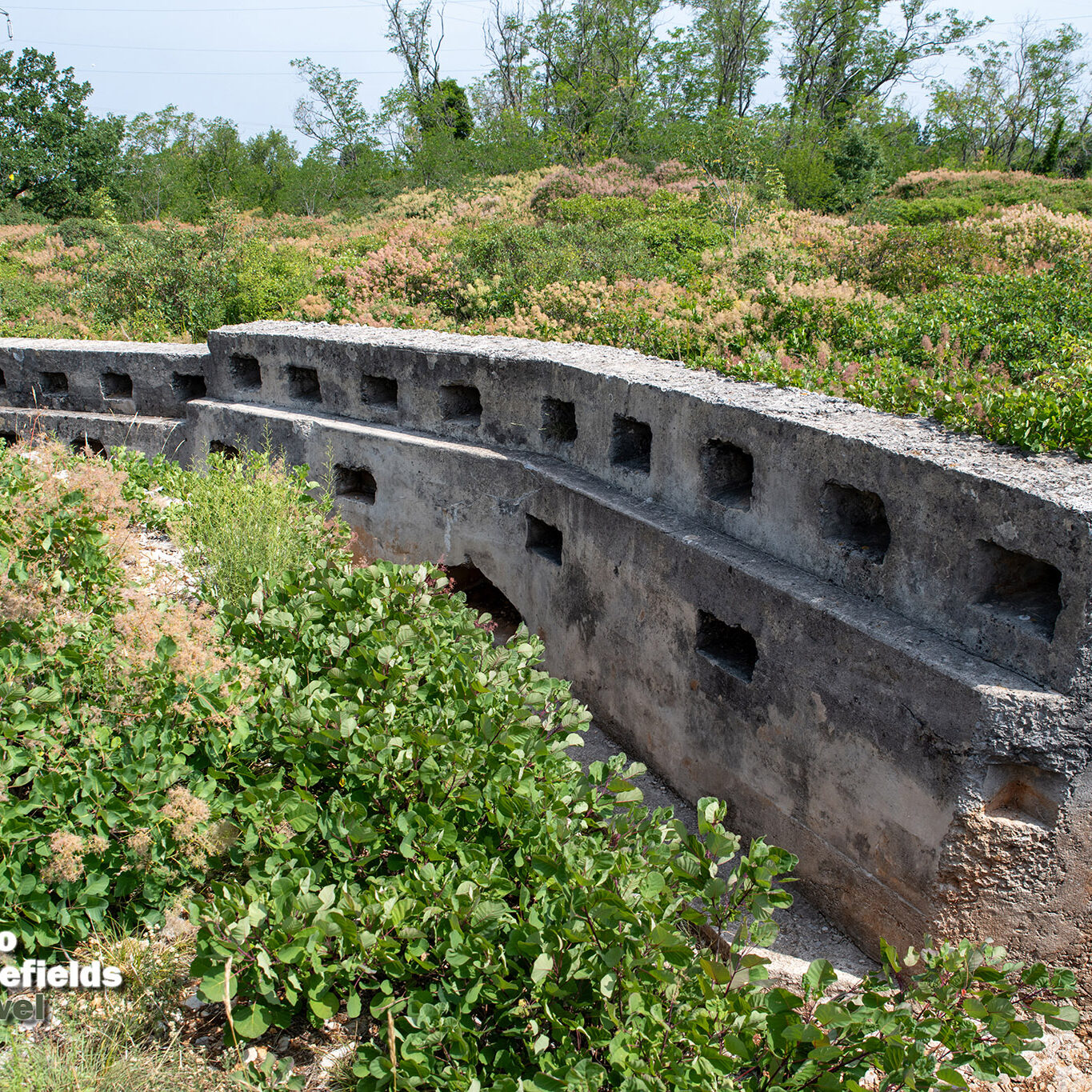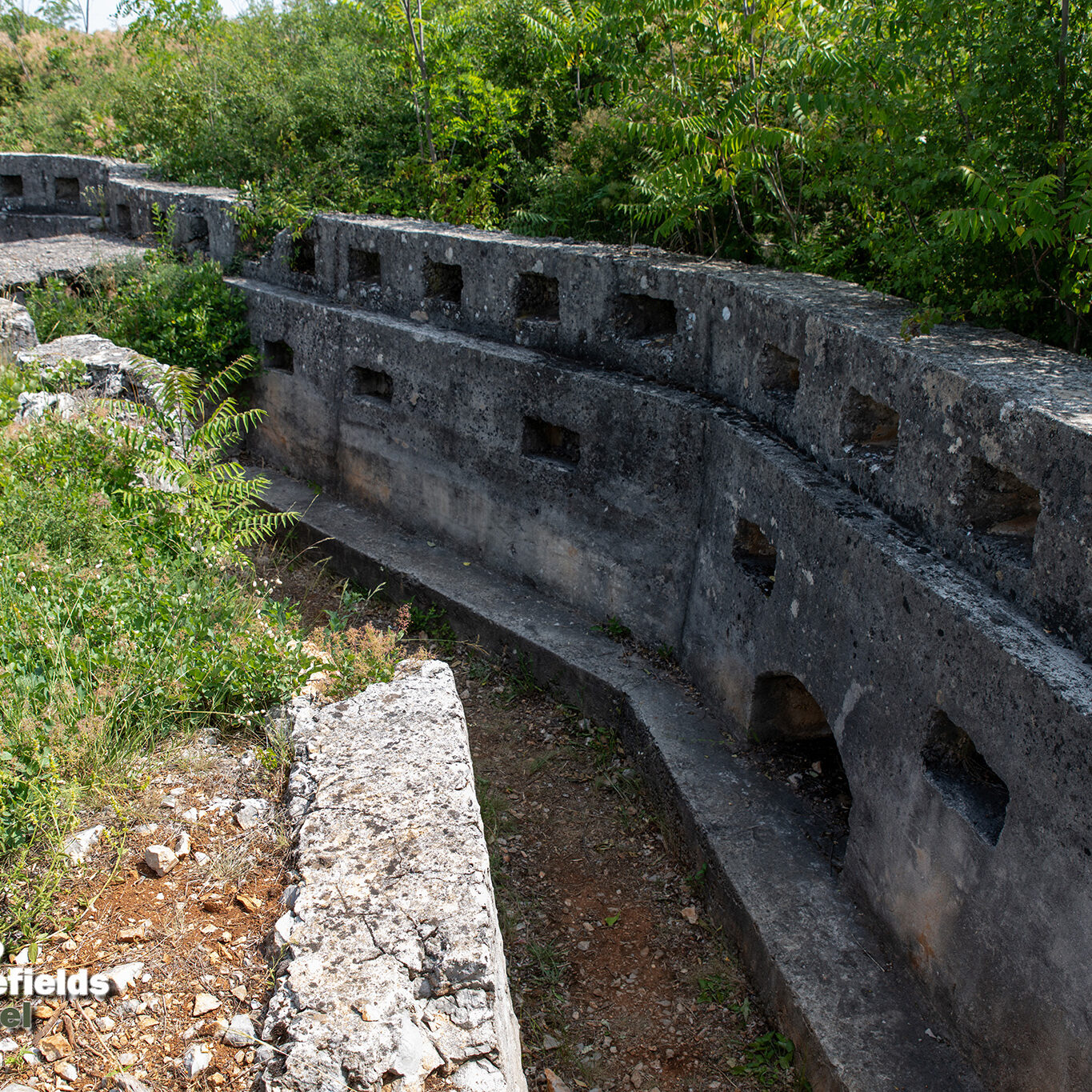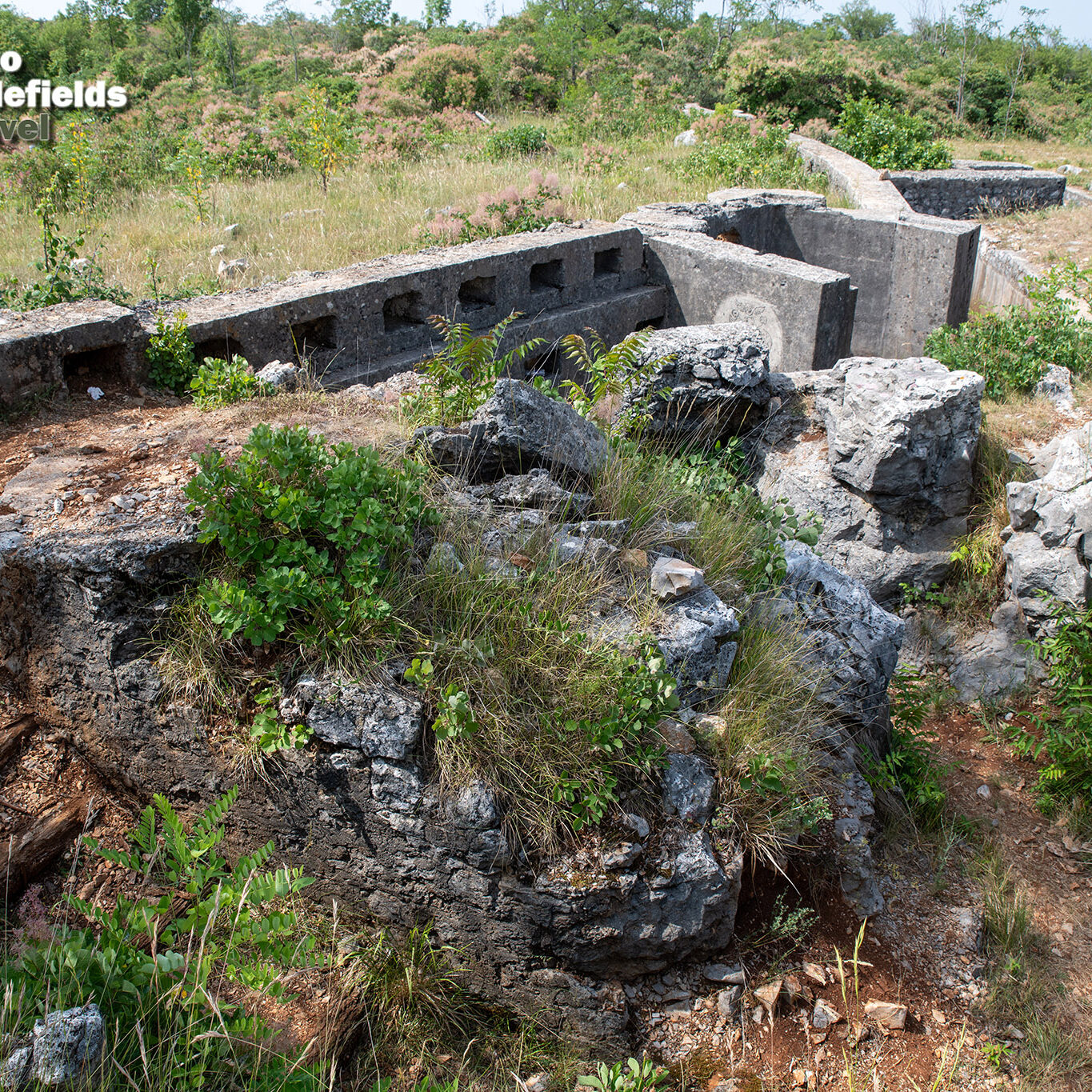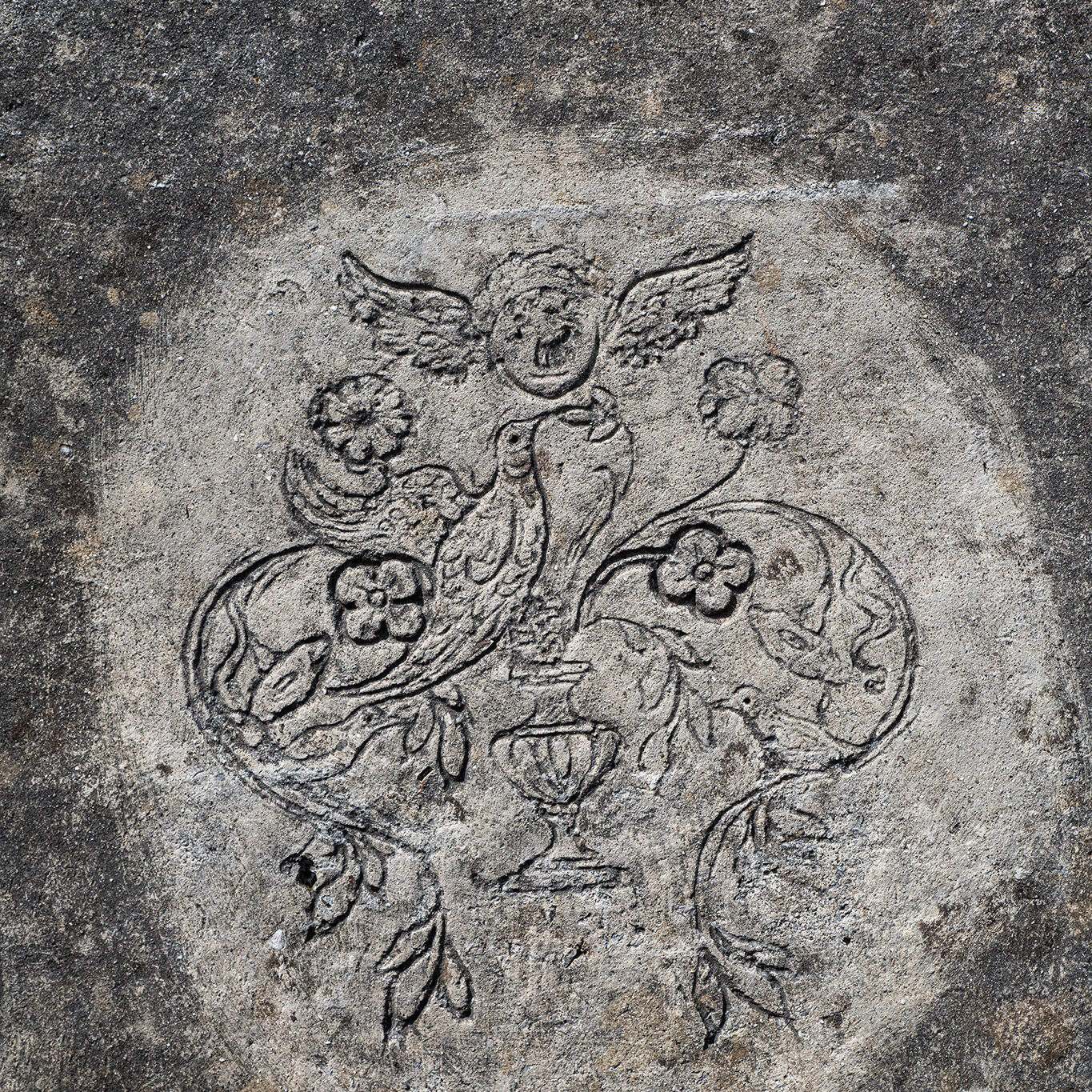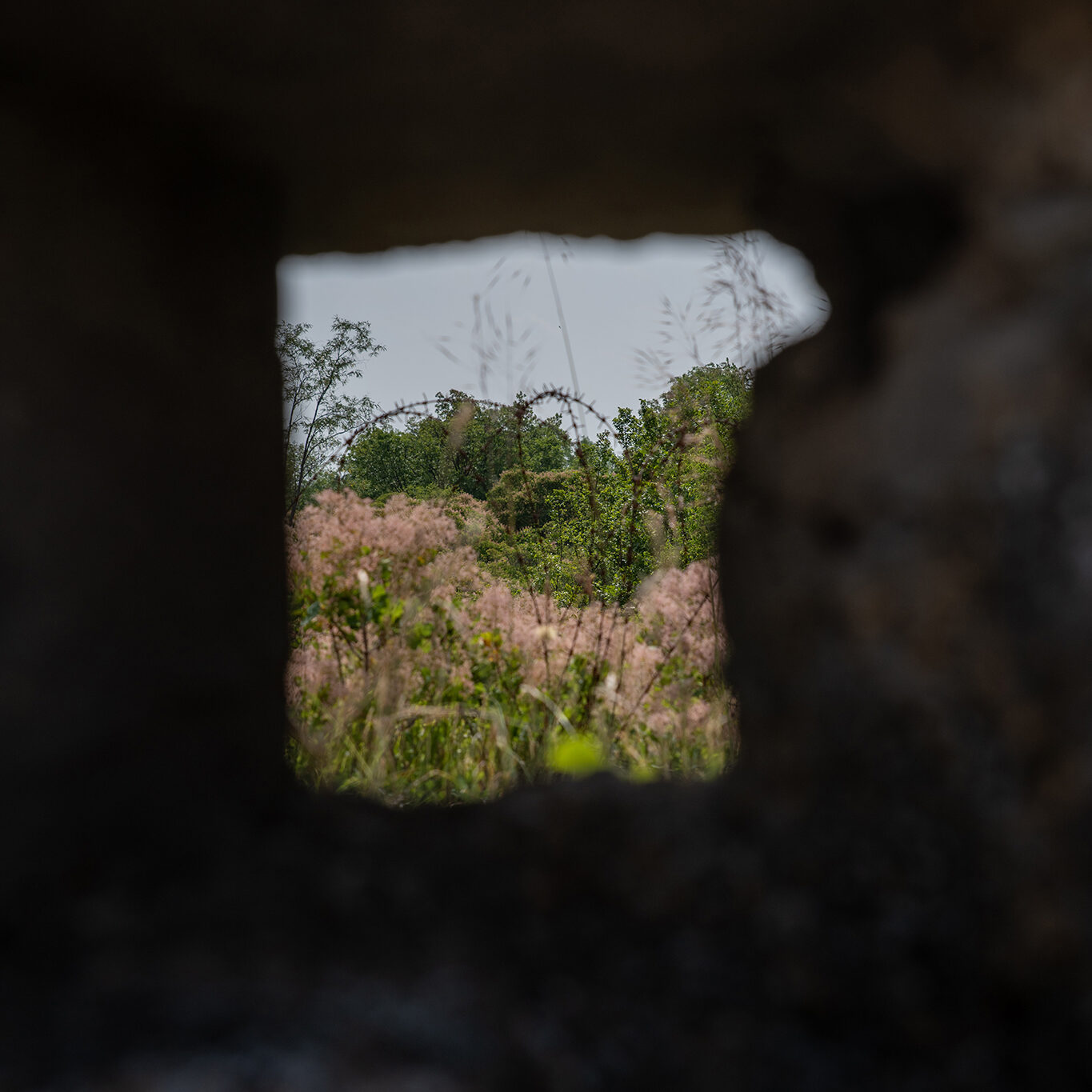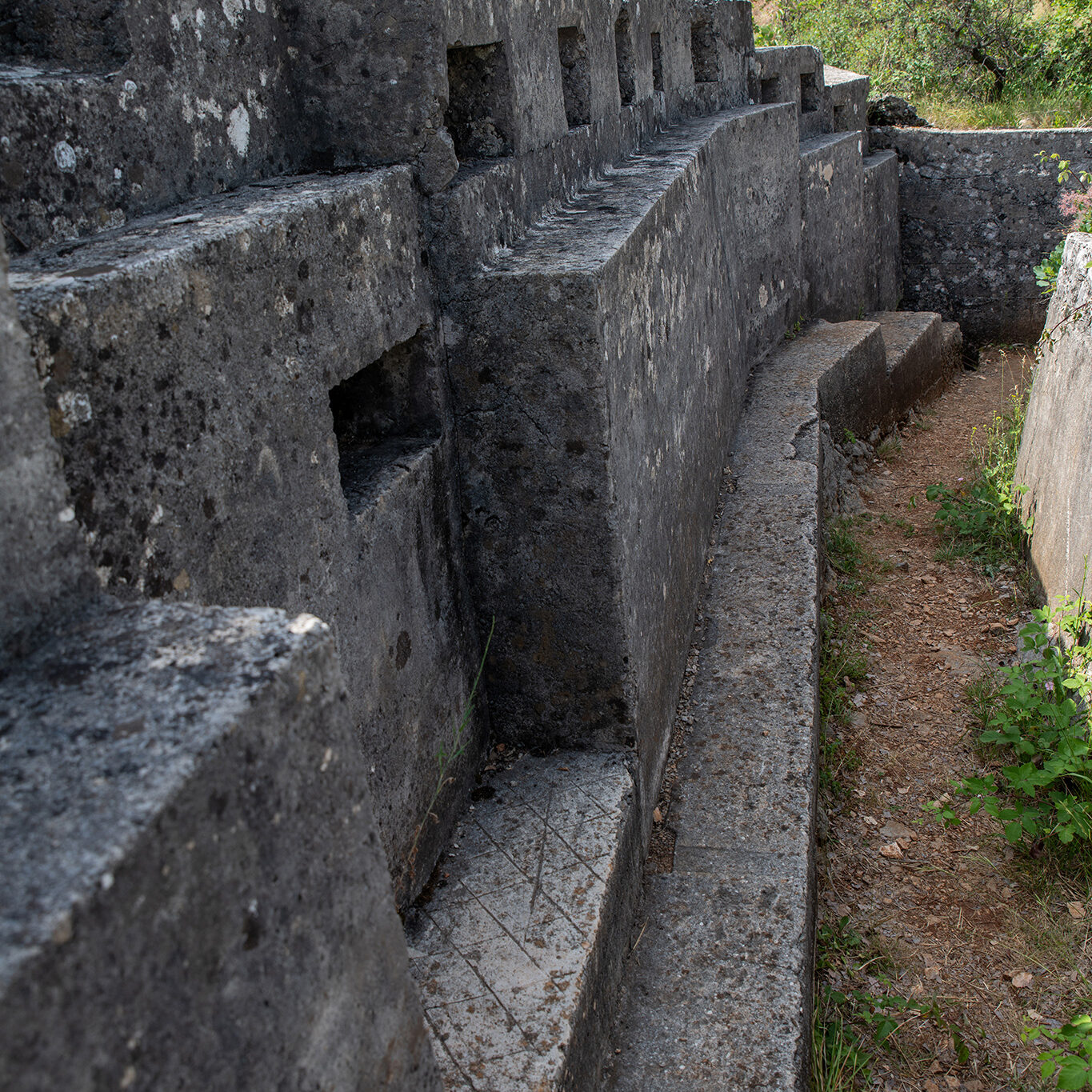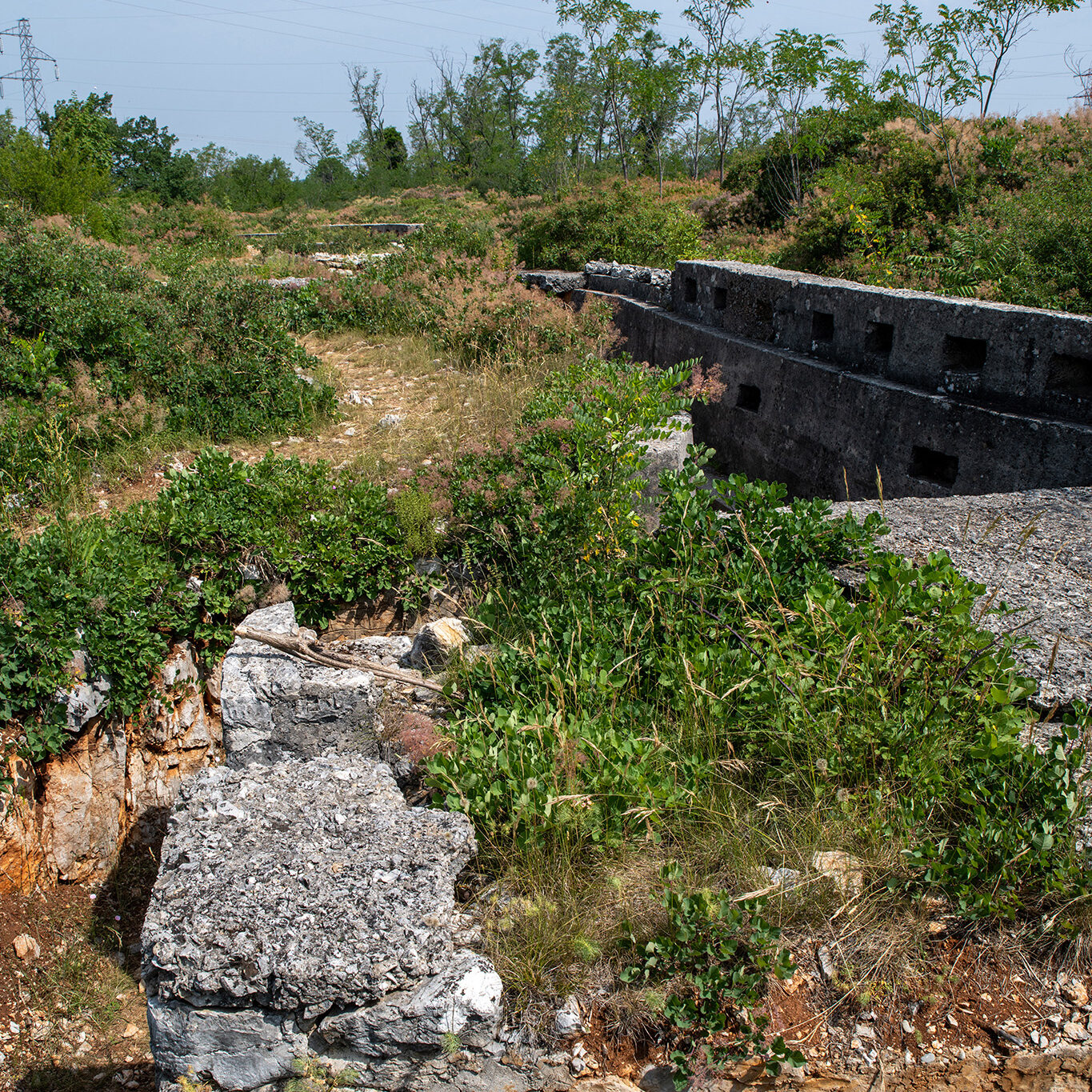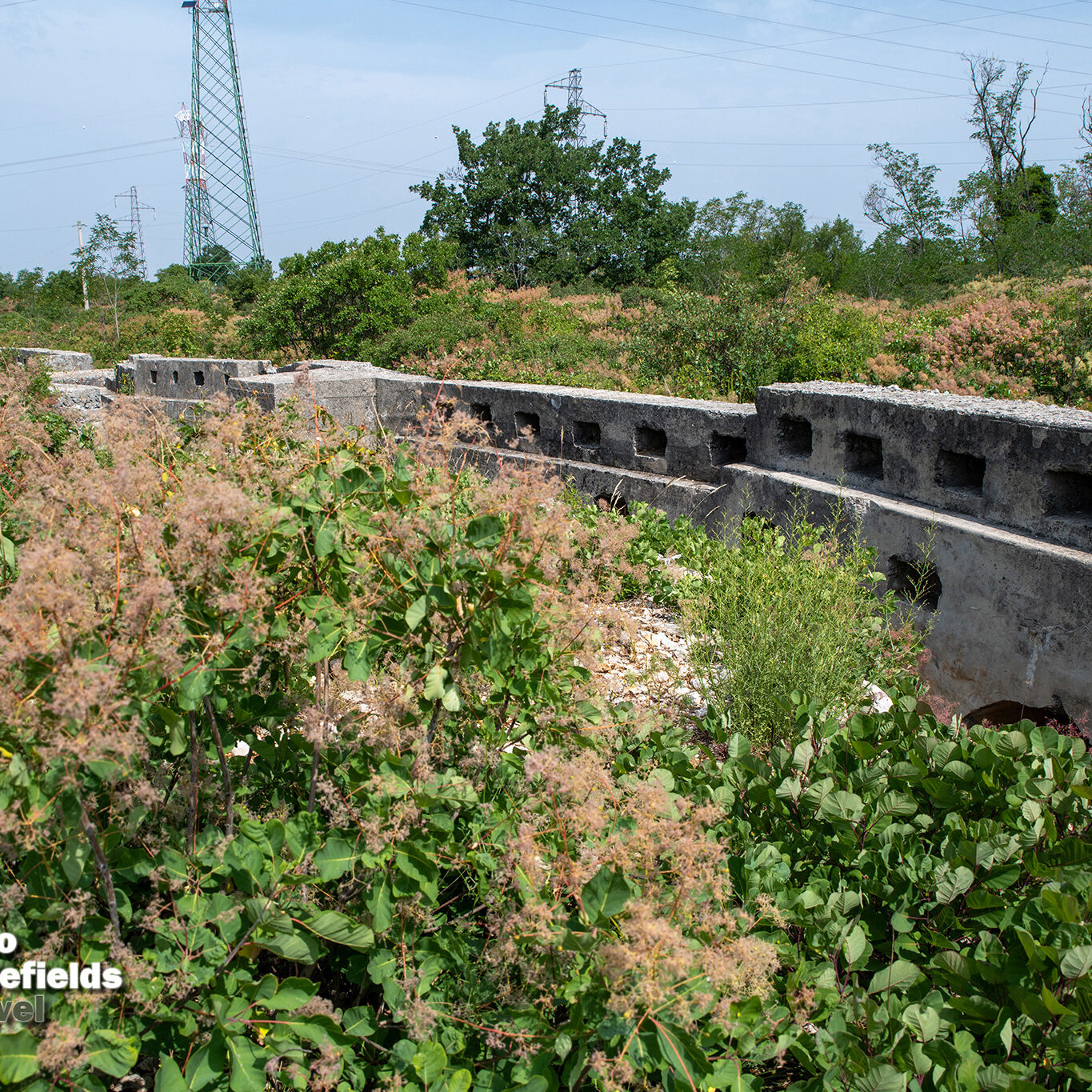Mount Sei Busi
Fortified Line of Mt. Sei Busi
Linea Fortificata del Monte Sei Busi Around the hilltop of Mt. Sei Busi, visitors can observe a section of the so-called “Large Italian trench”, a massive fortified defensive line that used to run from Mt. San Michele to the area of Selz, Doberdò del Lago and Monfalcone. Its construction was ordered by Luigi Cadorna, who intended to block counter-attacks of the Austro-Hungarian army.
After some early excavations, the Trench was reinforced with pre-stressed concrete between autumn 1916 and spring 1917. However, it proved useless during the Twelfth Battle of the Isonzo: the Third Army rapidly abandoned it indeed, following the offensive of the Austro-Hungarians on the Upper Isonzo and their incursion into the Natisone Valleys, in order to avoid encirclement.
Partly eroded by the action of weather, this massive military structure is worth a visit. It runs with a series of zigzags and you can observe its large internal buttresses that allowed troops in or out through some steps. Some machine-gun pits, slits for riflemen and the tunnels dug to store ammunition or arrange shelters can be easily spotted too. Likewise, you can observe several drawings and words carved by soldiers during their stay. These fascinating remains are still studied by scholars and researchers of the Great War to reconstruct the stories of individual soldiers or divisions that fought in this area of the Karst.


